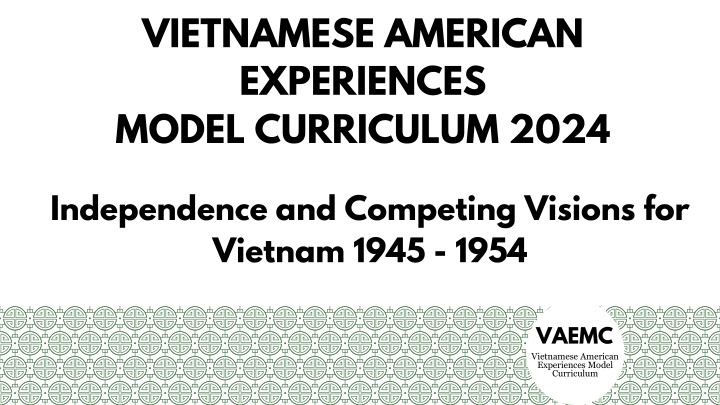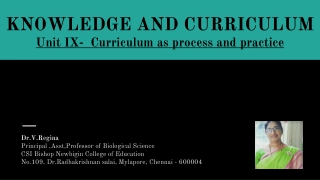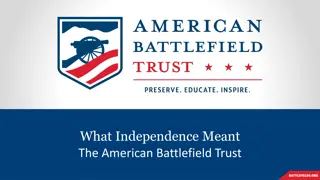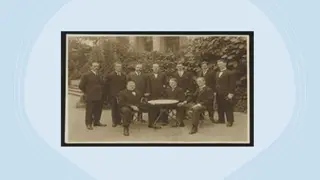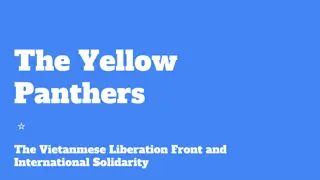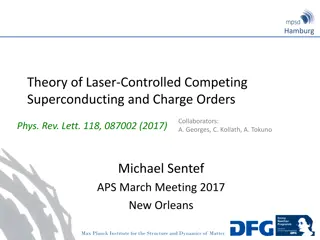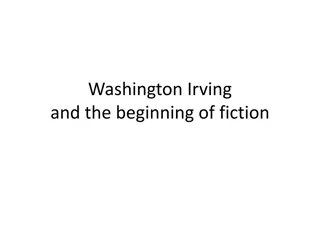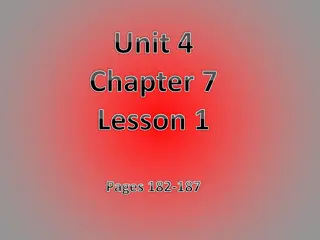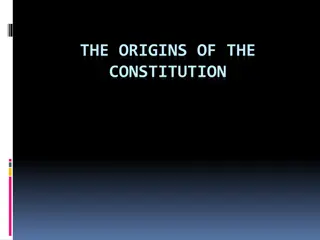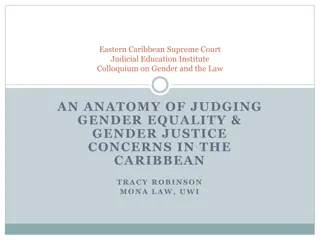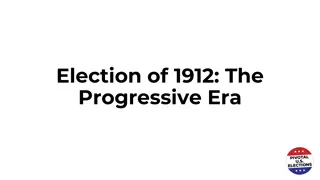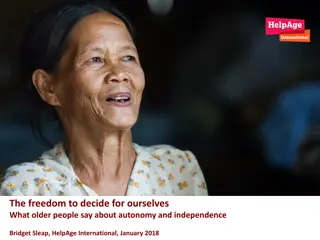Vietnamese American Experiences Model Curriculum - Independence and Competing Visions for Vietnam (1945-1954)
After World War II, Vietnam faced a power vacuum that led to competing visions for independence. Explore the post-WWII landscape in Vietnam, including Ho Chi Minh's Declaration of Independence and the establishment of the Democratic Republic of Vietnam in 1945. Dive into the complexities of colonialism, nationalism, and the struggle for autonomy in a pivotal period of Vietnamese history.
Download Presentation

Please find below an Image/Link to download the presentation.
The content on the website is provided AS IS for your information and personal use only. It may not be sold, licensed, or shared on other websites without obtaining consent from the author.If you encounter any issues during the download, it is possible that the publisher has removed the file from their server.
You are allowed to download the files provided on this website for personal or commercial use, subject to the condition that they are used lawfully. All files are the property of their respective owners.
The content on the website is provided AS IS for your information and personal use only. It may not be sold, licensed, or shared on other websites without obtaining consent from the author.
E N D
Presentation Transcript
VIETNAMESE AMERICAN EXPERIENCES MODEL CURRICULUM 2024 Independence and Competing Visions for Vietnam 1945 - 1954 VAEMC Vietnamese American Experiences Model Curriculum
After World War II August 1945: Nazi Germany and Japan are defeated Japan leaves Vietnam, leaving behind a power vacuum Potsdam Conference: The Allies (winners of WWII) agree to send troops to Vietnam to disarm Japanese China (under Nationalist Party leader Chiang-Kai Shek) will disarm the North Great Britain will disarm the South Post-WWII: Former colonies around the world take advantage of the vacuum before Allies come and demand decolonization and independence WARM-UP QUESTION: What do you think happens now? Does the French come back? Does Vietnam become independent peacefully? Based on previous knowledge of colonialism in Vietnam, what competing visions and ideologies for an independent Vietnamese nation do you think will be in conflict?
North Vietnam May 1941, H Ch Minh, leader of Indochinese Communist Party, formed the Vi t Nam c L p ng Minh (League for the Independence of Vietnam), or Vi t Minh Vi t Minh, although secretly led by the Indochinese Communist Party, the organization is joined by several anti-colonial and nationalist organizations against the French August Revolution: Japanese surrendered on August 15th Vi t Minh take over government and administrative centers around the country The king of the Nguy n Dynasty serving the French, B o i, is forced to abdicate September 2nd, 1945: H Ch Minh declares independence for Vietnam and the creation of Democratic Republic of Vietnam (DRV)
North Vietnam The French have fled, the Japanese have capitulated, Emperor Bao Dai has abdicated. Our people have broken the chains which for nearly a century have fettered them and have won independence for the Fatherland. Our people at the same time have overthrown the monarchic regime that has reigned supreme for dozens of centuries. In its place has been established the present Democratic Republic. Image of Ho Chi Minh giving speech For these reasons, we, members of the Provisional Government, representing the whole Vietnamese people, declare that from now on we break off all relations of a colonial character with France; we repeal all the international obligation that France has so far subscribed to on behalf of Vietnam, and we abolish all the special rights the French have unlawfully acquired in our Fatherland.
North Vietnam In 1945, China, led by Nationalist Party leader Chiang-Kai Shek, enters North Vietnam to disarm the Japanese Although DRV is communist-led, H Ch Minh is pressured by China to accept members of different parties in its government, especially the Vietnam Nationalist Party (Vi t Nam Qu c D n ng) and Greater Vietnam Party ( i Vi t Qu c D n ng) Chinese Civil War: From 1945-1949, China is embroiled in a civil war between Nationalist Party leader Chiang-Kai Shek and Communist Party leader Mao Zedong 1949: Mao Zedong declares the People s Republic of China, Chiang Kai-Shek flees to Taiwan, and the DRV now has full communist China support As Nationalist China loses influence, communist-led Vi t Minh begin to purge members of the DRV government From March to July 1946, the Vi t Minh systematically set about, "(to) wipe out the reactionaries." Known as the "Great Purge", the goal was to eliminate everyone thought dangerous to the Communist Party of Vietnam and tens of thousands of nationalists, Catholics and others were massacred. As French attempts to reassert control, the purged DRV government under communist control engages in warfare against French troops
North Vietnam - Purges and Executions Over 200,000 Vietnamese considered to be class enemies of the working class - political rivals, intellectuals, Catholics, artists, musicians, and landowners (even those that supported the Vi t Minh) were denounced by communist officials and killed First of all, he [ a relative within the Tran family line] was a victim of a malicious communist program called land reform. He was denounced and lost consciousness while being buried alive at night but thanks to the rain the layer of mud was made lighter, and tread upon by a water buffalo, suddenly freeing him from the muck, so his grandchild learned of that story and later retold it to us. And when going overseas we also had some exciting experiences, so we wrote them down as well as many other life memories, from Lang Son to here in the United States. -Oral history of Anthony LeDuc, now living in Santa Ana Image of Anthony LeDuc
Discussion Question In 1954, over one million Vietnamese from the North flee to the South, and in 1975, many of those refugees flee to the U.S. What are some historical events in North Vietnam that led many to move to the South?
South Vietnam August 1945: When Japanese surrender, a group of different political organizations band together to form the United National Front (M t tr n Qu c gia Li n hi p), comprised of various member organizations: H a H o Buddhist Church: A religious sect under its leader, Hu nh Ph S , a 19-year-old who claimed to be enlightened with over tens of thousands of followers. Cao i Church: A syncretistic Vietnamese religion that combines elements of different faiths, believing Jesus, Buddha, Confucius, and other major religions where all parts of the same Supreme Being. Pure Land Buddhist Association of Vietnam: A Buddhist sect that advocated for Buddhism as a vehicle for social equality and rights of the people Local Catholic Church organizations
South Vietnam The Fourth Internationalist Party: A Trotskyist-party, which was against the authoritarian Stalinist version of communism by H Ch Minh and instead advocated for the total class revolution of all peoples B nh Xuy n: A criminal organization trafficking drugs that had significant political influence in South Vietnam during the period of transition away from colonialism. They especially had control over major areas of Saigon Vietnam Nationalist Party and Greater Vietnam Party: These two parties, also present in North Vietnam, merged together in the South, representing a Vietnamese nation under a republican vision Republicanism: shaped by liberal ideals such as representative government, universal rights of man, civil liberties, and popular sovereignty.
Competing Interests in the South Images of various groups in South Vietnam
South Vietnam September 2nd, 1945: Same day H Ch Minh declared declaration of independence in the North Tr n V n Gi u, working under the Vi t Minh, attempts to make a similar speech and declares the DRV as the new government in Saigon Speech ends in bloodshed and riots, with 5 French and 19 Vietnamese killed The Vi t Minh attempt to confiscate all weapons and eliminate political enemies like in the North, leading to violent pushback and conflicts all over from the other organizations Image of Riots in Vietnam
South Vietnam When the British under the Allied Powers delegation come to disarm the Japanese, they arm French prisoners-of-war and allow them to retake control of the South The new French colonial power establishes the State of Vietnam (1946- 1955), bringing back the previous emperor, B o i, to establish a decolonial, Vietnamese nation that continues to serve French interests The new state does not have full rights as a nation, and the other political organizations continue to fight the French and the new government **NOTE: This French-controlled State of Vietnam is NOT the Republic of Vietnam, which formed in 1955 as a completely independent nation, despite having the same flag Image of Vietnamese Flag
Discussion Questions How did the political situation in South Vietnam differ from North Vietnam? How does this diversity affect the different ways those in South Vietnam attempted to achieve an independent state from France? Did Vietnamese advocate more for reform or for violent revolution compared to the North? Why?
Ng nh Dim and the Republic of Vietnam Ng nh Di m came from a family of high-ranking mandarins (administrative officials) that worked under the Nguy n Dynasty and were strongly Catholic, anti-French, and anti-communist Offered prime minister by Japanese, offered Minister of the Interior by H Ch Minh s DRV, and exiled by the French in 1950 Denounced both Japanese state and French-controlled State of Vietnam as not willing to give the Vietnamese people true independence, while denouncing the communist DRV for its killing of political rivals, most notably his older brother During exile, Di m gained support in the U.S. from leaders such as Cardinal Francis Spellman and John F. Kennedy Image of Di m on Tima Magazine Cover
Ng nh Dim and the Republic of Vietnam With U.S. support, he returns to Vietnam in 1954 and forms the Personalist Labor Revolutionary Party, or C n Lao Party, which advocates for the dignity of each human person in Vietnam Becomes prime minister in 1954 of the French-controlled State of Vietnam with the promise of his being given power of the military and civilian control Di m uses the army to destroy political rivals (B nh Xuy n, Cao i, H a H o, etc.), and then deposes B o i, ends all French control, and declares the Republic of Vietnam, now a fully independent nation Image of Di m
Discussion Questions Many U.S. and Vietnam-based textbooks describe North Vietnam as a fully independent nation, while the Republic of Vietnam is not. What are some reasons why the Republic of Vietnam s history as an independent nation is often omitted? How do you think Vietnamese Americans react to these statements?
Geneva Accords of 1954 French defeated by Vi t Minh in the Battle of i n Bi n Ph in North Vietnam Public opinion sways against French government in France, and France becomes war-weary and looks for a way out of fighting will trying to cut its losses Representatives from Cambodia, the People s Republic of China, France, Laos, the United Kingdom, the United States, the Soviet Union, the Viet Minh (i.e., the North Vietnamese), and the State of Vietnam (South Vietnamese) meet in Geneva, 1954 Geneva Accords agreements Ceasefire at all fronts would be agreed upon French would withdraw its troops from Vietnam North and South Vietnam would be divided at the 17th parallel Elections would be held in 1956 to reunify the country under one government
Geneva Accords of 1954 A period of 300 days for Vietnamese on both sides to move from North-South or South-North State of Vietnam and the U.S. government did sign the agreements, as they disagreed with the division of the country When Ng nh Di m establishes the Republic of Vietnam in 1955, he declares full independence from the French With support from the U.S., he refuses to go through the elections, pointing out that South Vietnam had never agreed to the Geneva Accords in the first place and that elections could not be conducted fairly in North Vietnam By 1955, Democratic Republic of Vietnam (North Vietnam) and Republic of Vietnam (South Vietnam) because two countries with separate governments, setting stage for civil war
Discussion Questions The agreement to referendum is often used in U.S. and Vietnam textbooks as evidence that the Republic of Vietnam was corrupt and undemocratic. How would Vietnamese Americans describe the impact of the Geneva Accords and why is this piece of history so important to many Vietnamese Americans identities and sense of self?
Discussion What historical narratives have you learned through U.S. or Vietnam official history courses in high school? Do they differ from the account presented here? Are certain details made invisible or put together in a certain way to support a certain narrative? Why is this period of history so important to Vietnamese Americans? How do narratives about the legitimacy, independence, and freedom of how the two Vietnamese nation-states formed shape how Vietnamese Americans think about the legitimacy of their own identity and community? U.S. and modern Vietnam sources often point to South Vietnam as a French and American-backed puppet state, even though: (1) Ng nh Di m had deposed the previous French controlled-state, and (2) H Ch Minh also sought support for the DRV from the U.S. in the same way as the Republic of Vietnam If the Republic of Vietnam was a puppet state, then Vietnamese Americans must accept that they are refugees and representatives of an illegitimate government and nation
